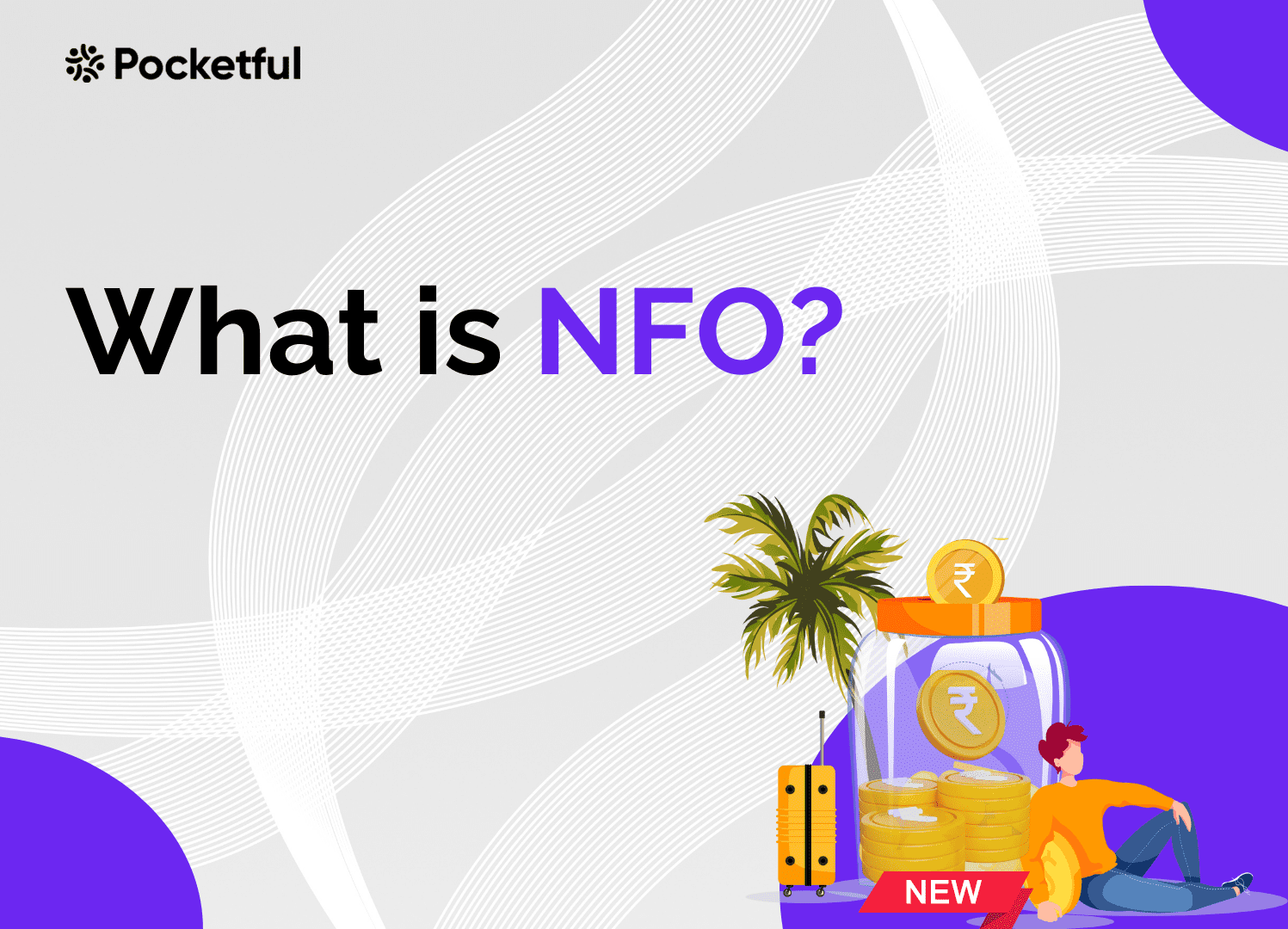| Type | Description | Contributor | Date |
|---|---|---|---|
| Post created | Pocketful Team | Jul-01-24 | |
| Add new links | Nisha | Mar-01-25 |
Read Next
- What is the 15*15*15 Rule of Mutual Fund Investing?
- Mutual Fund Factsheet: Definition And Importance
- XIRR Vs CAGR: Investment Return Metrics
- Arbitrage Mutual Funds – What are Arbitrage Funds India | Basics, Taxation & Benefits
- Hybrid Mutual Funds – Definition, Types and Taxation
- Top AMCs in India
- Active or Passive Mutual Funds: Which Is Better?
- Liquid Funds Vs Ultra Short Fund: Which One Should You Choose?
- Debt Mutual Funds: Meaning, Types and Features
- Equity Mutual Funds: Meaning, Types & Features
- What are Small Cap Mutual Funds? Definition, Advantages, and Risks Explained
- What is PSU Index? Performance, Comparison, Benefits, and Risks Explained
- Bandhan Long Duration Fund NFO: Objective, Benefits, Risks, and Suitability Explained
- Smart Beta Funds: Characteristics, Factors, Benefits, and Limitations
- The Rise of ESG Funds: Overview, Growth, Pros, Cons, and Suitability
- Mutual Funds vs Direct Investing: Differences, Pros, Cons, and Suitability
- A Comprehensive Guide on Mutual Fund Analysis: Quantitative and Qualitative Factors Explained
- NFO Alert: PGIM India Large & Mid Cap Fund
- ELSS Funds: 3 Years Lock-In Worth It?
- Regular vs Direct Mutual Funds: Make The Right Investment Decision
What is NFO? Features, Types, & How to Invest in It

In the stock market, there are lots of investing opportunities for different participants, whether traders or investors. Investment options such as stocks, ETFs, mutual funds, etc. However, what would happen if a brand-new fund enters the market with no prior performance history? It is known as the “New Fund Offer,” or NFO.
In this blog, we will deep dive into the NFO, along with the benefits and risks of investing in it.
What is NFO (New Fund Offer)?
Asset Management Companies (AMCs) come up with NFOs, or new fund offerings, as an investment product. The process by which AMCs offer a new mutual fund for subscription to the general public is called an NFO. The NFOs offer investors a chance to invest in emerging trends or themes such as Green Energy, AI, Electric Vehicles, etc.
Further, when new indices are launched by exchanges like NSE and BSE in India, and there is significant demand for them by investors, AMCs often introduce NFOs for such indices as a passive investment option.
The aim of the AMCs in initiating the NFO is to procure funds and allocate them to buy the securities of the underlying fund. Investors may subscribe to it during the NFO period, or in the case of open-ended schemes, they can invest in the fund later as well once the allotment is done.
Features of NFO
- The NFO is opened for a specific period in which investors can subscribe.
- Most of the NFOs are initially offered for INR 10.
- An offer document that contains information on the fund manager’s strategy, investment goal, risk, and other details is attached to NFOs.
- NFOs offer you an opportunity to invest in a new theme or indices, which might not be available in the market.
Read Also: NFO Alert: PGIM India Large & Mid Cap Fund
Types of NFOs

There are various types of NFOs-
1. Based on Structure
Generally, there are 3 types of NFO based on the structure:
- Open-Ended Fund: These funds allow you the flexibility to invest and withdraw from the fund at any point in time.
- Close-Ended Fund: An investor can invest during the NFO period, but cannot exit until the lock-in period is over, but they have the option to exit from the fund by selling it in a secondary market.
- Interval Funds: These funds have all the features of a close-ended fund, but an investor can exit from this fund during the exit interval provided by the scheme.
2. Based on Asset Classes
There are 3 different types of NFO based on asset class-
- Equity Fund: In an equity-oriented mutual fund, a predominant part of your capital is invested into equity and equity-related instruments.
- Debt Fund: The NFOs of debt funds invest in fixed-income securities, which include bonds, government securities, debentures, etc.
- Hybrid Fund: These NFOs invest in a combination of both equity and debt asset classes, providing you with a combination of both stability and growth in your portfolio.
Did you know?
As per SEBI, for open-ended schemes (except ELSS), the NFO should be open for 15 days.
Advantages of Investing in NFO
- NFOs allow you to invest in emerging sectors or new themes of the economy such as green energy, AI, ESG, etc.
- Certain NFOs provide an excellent opportunity for diversification in the investment portfolio.
- Generally, units of NFOs are offered at a fixed price of INR 10 per unit, which makes them accessible to a diverse set of investors.
- NFOs are managed by an experienced fund manager who invests the proceeds of the fund as per the investment objective defined by the scheme.
Disadvantages of Investing in NFO
- Since NFOs lack a track record, it can be challenging for investors to compare the performance of the schemes.
- In NFOs, there is no assurance that the fund manager will perform well.
- Most of the thematic NFOs generally have a higher expense ratio as compared to existing funds.
- As per the trend, AMCs often launch NFOs during a bull market phase. However, if the market is at its peak during the NFO launch, these unfavorable conditions can negatively impact future returns of the fund.
Key points before investing in NFOs

- AMC Reputation: It’s crucial to consider the reputation of the Asset Management Company; an established fund house typically offers greater security and stability.
- Cost: Always check the total expense ratio (TER) of the NFOs before investment. The TER of the NFO should not be very high, as this may erode your returns over time.
- Sectoral NFO: If the NFO is investing in a particular sector or theme, one must analyze the growth prospects of that particular sector before making any investment.
- Flexibility: One must check if the fund is open-ended or close-ended, as close-ended funds do not provide liquidity.
- Investment Goal: As a prudent investor, one should invest in NFOs only if the investment objective and risk profile are aligned with the NFO.
How to invest in NFO
There are multiple ways to participate in the NFOs, whether online or offline. There is a direct way to invest by visiting the office or website of the AMC offering NFOs. Further, various investment platforms and stock brokers in India provide the facility of participating in the NFOs.
What happens after the NFO period

Within five working days of the NFO period, the units are allocated to the investors by the Asset Management Company (AMC).
If the fund is open-ended, the AMC will permit investors to make regular contributions and withdrawals from the fund once the allotment of NFO is done. However, if the fund is close-ended, investors cannot sell the units before the lock-in period. However, they have an option to sell the units of fund in the secondary market if there is enough liquidity.
Read Also: Bandhan Long Duration Fund NFO: Objective, Benefits, Risks, and Suitability Explained
Conclusion
In conclusion, NFOs present new investment opportunities offered by asset management companies, allowing investors to invest in indices or themes not currently provided by the existing mutual funds.
However, the lack of a historical track record makes it challenging for investors to compare the performance. Additionally, AMCs often launch NFOs in a bull market with investment objectives similar to existing options in the market. Therefore, it is crucial to consult with your financial advisor and consider all the associated risks before investing in an NFO.
| S.NO. | Check Out These Interesting Posts You Might Enjoy! |
|---|---|
| 1 | What Is An IPO Mutual Fund? Should You Invest? |
| 2 | Mutual Fund Taxation – How Mutual Funds Are Taxed? |
| 3 | What is Solution Oriented Mutual Funds? |
| 4 | What is TREPS & Why Mutual Funds Invest in it? |
| 5 | Debt Mutual Funds: Meaning, Types and Features |
Frequently Asked Questions (FAQs)
Is NFO good for investment?
Investors with a high tolerance for risk can invest in NFOs; or investors can wait for a while to assess the fund’s performance, compare it to other funds in the same category, and then decide whether to invest.
Can I withdraw my money during the NFO period?
No, withdrawals are not permitted during the NFO open period. However, investors can sell their investment once allotment is done.
What are the risks involved while investing in NFO?
Investing in New Fund Offerings (NFOs) entails various risks due to their lack of performance history.
How can I invest in NFOs?
There are multiple options to invest in NFOs. One can visit the AMC website and use their online platform or can apply via stock brokers as well.
Is NFO better than existing mutual funds?
Since NFOs do not have an established track record of performance, it is challenging to compare them to existing mutual funds.
Disclaimer
The securities, funds, and strategies discussed in this blog are provided for informational purposes only. They do not represent endorsements or recommendations. Investors should conduct their own research and seek professional advice before making any investment decisions.
Article History
Table of Contents
Toggle